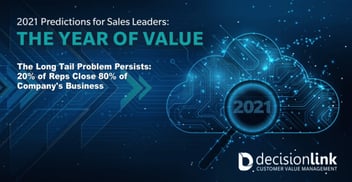Change Management and the Adoption KPIs to Track

Whether you are deploying a SaaS solution or a new and more advanced technology, you cannot do it without considerations for change management and change leadership. In order for a successful launch of any size, the users of the new solution must be at the heart of every deployment.
Change management does just that. It is the management of the people's side of change. Project management, conversely, serves the technical side of change.
When conducting value and pricing management projects, I am often asked the following questions:
- What is the definition of project and deployment success?
- How do you know if we are successful?
- What makes this new deployment a success?
- How do we communicate progress on the software deployment?
I always recommend having an intentional approach to tracking changes on a specific project and to communicating progress to the relevant stakeholders. That means defining the right key performance indicators (KPIs) and creating an easy-to-read dashboard to track and measure performance to date.
Let us look first at the right KPIs that help keep track of how well we are doing with the program or the software deployment.
Prosci® recommends looking at both hard financial numbers and soft change management numbers. A good blend would have 3 financial KPIs and 3 change management KPIs. These would then be reported in a regular manner in the form of a dashboard.
When it comes to customer value management software, financial KPIs that are used to measure the value of a CVM platform can include metrics like:
- EBIT margin
- ARR Growth
- Higher Average Selling Price
- Increased Deal Velocity
- Increasing Team Close Rate
- Increased NRR
- Reduced Overall Cost of Sales
- Improved Customer NPS
Obviously, it would be challenging to track and communicate all of these KPIs. So instead, I recommend picking the top three that matter most to your business to report internally to executive teams and potentially to Board members.
Change management KPIs are equally important to report upon. These KPIs show how much progress the teams are making and how the software deployment is going.
Change management professionals typical track three critical metrics:
User Adoption:
- Are the users trained, onboarded, and registered in the platform?
- Have they been showing signs of interest in the new solution?
- Do they see the value of the new software?
- Early adoption is essential to get critical mass and to accelerate time to value. But adoption alone is not enough to consider it success. Users who have adopted the platform must be active in it and be continuously getting better at using it.
User Usage Rates:
- Are users using the platform at the level we expect them to be?
- Are they spending enough time within the platform?
- Where are they processing their activities? On our platform or outside of it?
User Proficiency:
- Are users able to leverage the software at the speed and depth that they are expected to?
- How much time do they take to produce deliverables, outcomes, and content?
The good news is that you can extract the change KPIs directly out of the software or technology platform. The next step is to design an extremely attractive and simple dashboard that can be communicated widely to the relevant teams to promote progress and success. Remember that showing success early and quickly brings a positive energy to the organization. It also communicates confidence to the late majority of adopters. It might bring them on board faster.
Software and technology adoption is essential to accelerate time to value. But it is not enough. Usage and proficiency also matter. A good change management program includes these KPIs to promote deployment success. Keep in mind that the goal is to avoid being part of the 70% of the projects that do not reach expected outcomes. Working on user adoption, usage, and proficiency from the get-go is the way to go.

Transformations are difficult, but when done correctly, they can change the DNA of an company. Read this whitepaper for a roadmap on moving the needle towards value excellence within an organization.
Author Bio

Dr. Stephan Liozu (www.stephanliozu.com) is the Founder of Value Innoruption Advisors (www.valueinnoruption.com), a consulting boutique specializing in industrial pricing, digital business, and value models, and value-based pricing. Stephan has 30 years of experience in the industrial and manufacturing sectors with companies like Owens Corning, Saint-Gobain, Freudenberg, and Thales. He holds a Ph.D. In Management from Case Western Reserve University, and has written several books, including Dollarizing Differentiation Value (2016) and Value Mindset (2017).

 ValueCloud
ValueCloud
.png?width=118&height=76&name=Rectangle%20(3).png) ValueCloud Ignite
ValueCloud Ignite
.png?width=92&height=92&name=Rectangle%20(4).png) Free Assessment
Free Assessment
.png?width=100&height=100&name=Rectangle%20(5).png) Watch a Demo
Watch a Demo
.png?width=82&height=96&name=Rectangle%20(6).png) Value Calculator
Value Calculator

.png?width=62&height=51&name=Group%2010%20(1).png) Marketing
Marketing
 Sales
Sales
 Customer Success
Customer Success
 Engage Prospects
Engage Prospects
 Win Deals Faster
Win Deals Faster
 Retain Customers
Retain Customers
.png?width=62&height=62&name=Rectangle%20(8).png) Adopt and Scale
Adopt and Scale
.png?width=54&height=54&name=Rectangle%20(9).png) Cybersecurity
Cybersecurity
 Healthcare
Healthcare
.png?width=54&height=54&name=Rectangle%20(10).png) IT & Software
IT & Software



